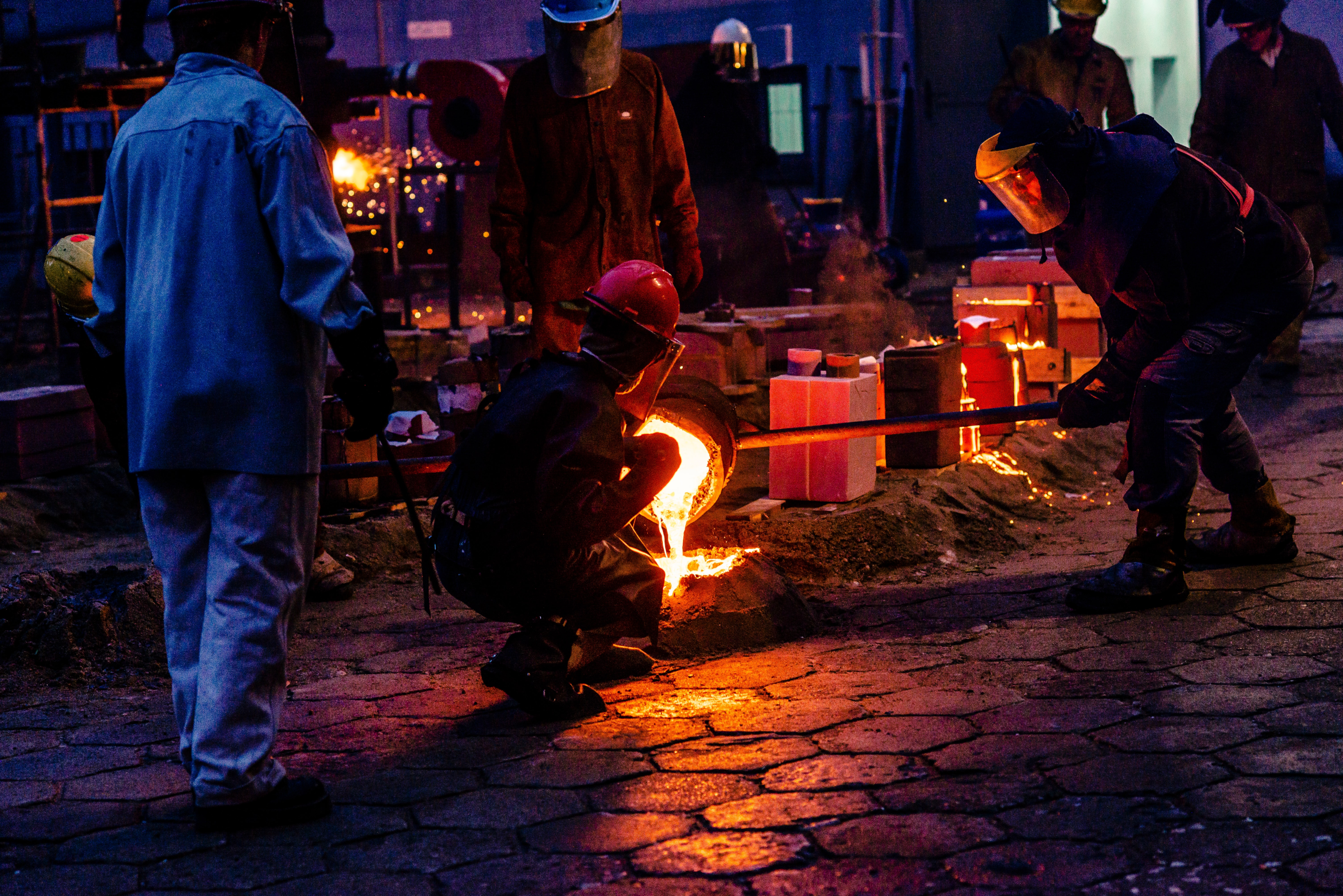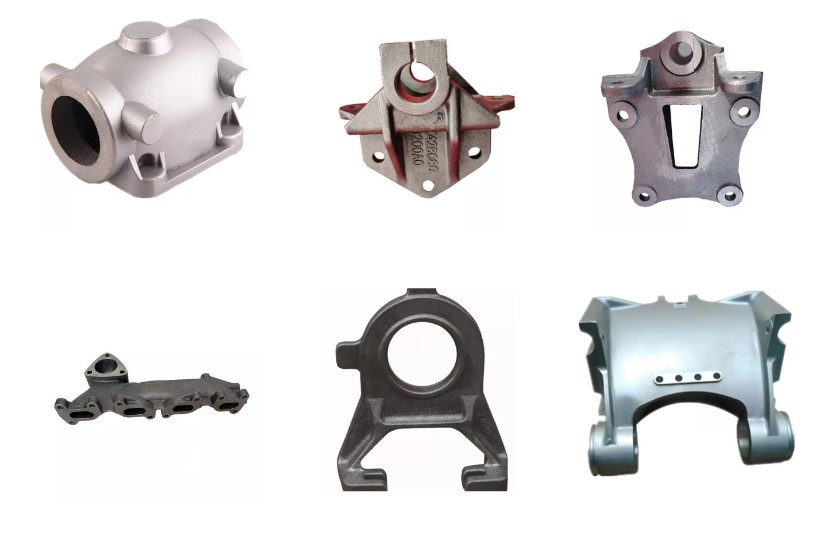Ductile iron is a type of cast iron with excellent mechanical and physical properties, that’s why many manufacturing companies are choosing ductile iron. Its ability to be cast into complex shapes, coupled with its strength and durability, has made it a popular choice for a wide range of uses, including construction, automotive, and pipelines.
What is Ductile Iron or Nodular Cast Iron
The name “ductile iron”, “nodular cast iron”, or “spheroidal graphite cast iron” comes from its ability to be bent, drawn, and formed into various shapes.
It is a ferrous alloy that is made up of iron, carbon, and other trace elements. The treatment of magnesium causes the carbon in the molten iron to form small spherical particles called graphite nodules.
The ductile iron properties improve because of the spherical graphite structures.
Due to the graphite spheroids in ductile irons, the friction between the iron particles is less. It acts as a lubricant to reduce the friction between two ductile iron castings. Its properties allow it to be easily machined and welded, making it a versatile material.
Manufacturing Process of Ductile Cast Iron

The low-cost manufacturing of ductile cast iron involves several steps. First, the pig iron is melted in a blast furnace. This process removes the excess sulfur and other impurities from the pig iron and creates a product called steel. In addition, the magnesium treatment during ductile iron production also produces spherical graphite nodules, making ductile iron castings move perfectly.
Once the iron cools, it is machined to create the desired shape and size. The ductile iron is then tested for strength and other properties before it is sent for further processing. The ductile iron is subjected to a subsequent heat treatment process. This increases its strength and durability.
It is then inspected for defects and any other imperfections. If any defects are found, the cast iron must be re-melted and the process repeated.
Nodular Cast Iron Castings in Different Industries
Because of the casting process of nodular iron, it offers superior strength, ductility, and machinability than traditional cast iron. Its tensile and yield strength is better than its metal counterparts. It is higher than other metals, such as steel and aluminum.
Ductile iron is also more malleable than other metals. This property allows it to be bent or molded into complex shapes without cracking, which is a major advantage over other metals. This flexibility also makes ductile iron easier to create more intricate designs.
It also has superior machinability compared to other metals. This property makes it easier to shape, drill, and cut, allowing for the production of complex parts and components with greater accuracy and precision. All of these are due to ductile iron compositions.
Regular Cast Iron and Ductile Cast Iron

The extra cost of ductile iron is often worth the investment due to its advantages compared to using gray iron.
Gray cast iron is a ferrous material composed of iron, carbon, and silicon. It is characterized by its gray appearance, which is due to the presence of graphite flakes in the material. Gray cast iron has a relatively low tensile strength and is relatively brittle.
Useful Properties of Ductile Iron
From mechanical parts to structural building materials, ductile iron parts have proven to be invaluable materials.
Pipe Fittings
Ductile iron pipes are often used in a wide variety of applications, including water supply, wastewater, and irrigation systems.
The resistance to corrosion of ductile iron makes it suitable for use in areas with prone to temperature changes and saltwater exposure. This makes it ideal for use in coastal areas, where the environment can be hostile to other metals.
Machine Frames
Ductile iron is also a great choice for creating lighter and more flexible machine frames. It is much lighter than steel and other metals, yet still retains its strength and durability. This makes it great for machines that need to be moved or transported easily and quickly.
Its strength also makes it an ideal choice for high-load applications, as it can withstand high levels of stress and strain.
Gear Boxes
The most common application for ductile iron in gear boxes is for transmission and differential components. The strength and ductility of ductile iron make it ideal for producing components such as gears, shafts, and sprockets.
The strength and wear resistance of ductile iron makes it ideal for use in bearings, which are often exposed to high loads and can be subject to wear and tear. It is often used to produce bearing components that are more durable and reliable than other materials, such as steel or bronze.
Automotive Components
Its strength and malleability make it an ideal material for engine blocks, transmission cases, and other components that require a high degree of precision and durability.
It is also a popular choice for exhaust systems, as its resistance to corrosion and strength make it an ideal material for this application.
Besides engine components, ductile iron is also used in the production of axle housings, suspension components, and drivetrain components. Its mechanical properties make it an ideal choice for components that must be able to withstand heavy loads and frequent use.
Advantages of Using Ductile Iron
It is known for its good mechanical properties, making it a preferred material for many industrial and manufacturing needs.
Corrosion Resistance
Ductile iron is suitable for applications that are exposed to harsh elements and destructive chemicals. This is why it is an excellent option for water pipes and other plumbing systems.
Impact and Fatigue Resistance
Ductile iron is a type of cast iron that is both strong and resistant to fatigue and impact. because of its strength-to-weight ratio from its unique chemical composition.
It contains a high amount of graphite, which is what gives it its ductility. This allows it to be bent and twisted without breaking, making it an ideal material for parts that need to withstand a large amount of stress.
Slow Deterioration Process
The wear resistance of ductile iron is due to its high hardness. The spheroidal graphite iron acts as a lubricant, reducing the friction between metal components. It is highly resistant to abrasion, erosion, and impact, that’s why many industries are choosing ductile iron parts.


